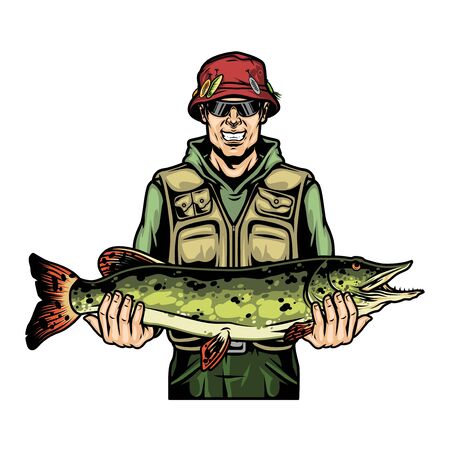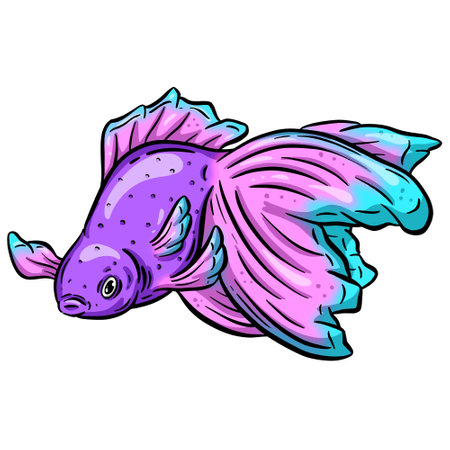1. Understanding Fall Catfish Behavior
As the leaves start to turn and the air cools off, catfish begin to change up their routines. If you want to catch big cats in the fall, it helps to know how their habits shift when the water temperatures drop. In autumn, catfish aren’t as scattered as they are in summer; they start gathering in deeper water where the temperature is more stable and food is easier to find. This makes fall one of the best times for targeting trophy-sized fish if you know where to look.
Why Do Catfish Move Deeper in Fall?
During summer, catfish often hang out in shallow areas at night and early morning, feeding on baitfish and insects. But as fall rolls in and surface temperatures dip, baitfish also move deeper for warmth and safety—and the catfish follow right behind them. The deeper water doesn’t change temperature as quickly, so catfish find it more comfortable and predictable compared to shallow flats or riverbanks.
Main Reasons Catfish Go Deep:
| Reason | Description |
|---|---|
| Stable Temperatures | Deeper water holds heat longer and doesn’t fluctuate as much with cold fronts. |
| Baitfish Migration | Baitfish like shad and minnows head deeper, bringing hungry catfish along. |
| Oxygen Levels | The turnover in lakes mixes oxygen throughout, making deep water more inviting for fish. |
| Less Disturbance | Boaters and anglers stick closer to shore, so deep spots are quieter and less pressured. |
Which Catfish Species Are Active?
In most American lakes and rivers, you’re likely to encounter three main types of catfish: Channel Catfish, Blue Catfish, and Flathead Catfish. Each species responds a little differently to dropping temps, but all three can be found deeper in the fall months.
| Species | Main Fall Habits | Where to Find Them |
|---|---|---|
| Channel Catfish | Move from shallow flats into deeper channels and holes; stay active until water gets very cold. | Lakes, reservoirs, large rivers—look for submerged creek beds or drop-offs. |
| Blue Catfish | School up around deep structure; often chase big schools of baitfish. | Main river channels, dam tailwaters—focus on ledges or underwater humps. |
| Flathead Catfish | Become less aggressive but still hunt near cover in deep water. | Timber piles, root wads, deep pools along river bends. |
Quick Tip:
If you’re fishing a new spot this fall, start by scanning with your electronics or a depth finder. Look for bait balls on your screen—where there’s bait, there’s usually catfish nearby! Knowing these patterns will help you target those deep-water cats all season long.
2. Gear and Tackle for Deep-Water Catfishing
Essential Rods and Reels
If you want to land big fall catfish lurking deep in lakes and rivers, it starts with the right rod and reel combo. Go for a medium-heavy to heavy action rod, usually between 7 and 9 feet long. This gives you the backbone to set hooks deep and enough length to cast out to those hard-to-reach holes. Pair your rod with a baitcasting or large spinning reel—something with a solid drag system that can handle strong, stubborn fish.
| Rod Type | Recommended Length | Best For |
|---|---|---|
| Medium-Heavy Spinning | 7 – 8 | General deep-water catfishing |
| Heavy Baitcasting | 7.5 – 9 | Trophy-size cats & heavy cover |
Line Selection
Catfish are tough customers, so you need line that can take abuse from rocks, snags, and the fish themselves. Braided line is popular because of its strength and sensitivity—try 30-50 lb test for most situations. If youre fishing especially snaggy areas, some folks like monofilament around 20-30 lb test since it has more stretch and abrasion resistance.
| Line Type | Pound Test | When to Use |
|---|---|---|
| Braided | 30-50 lb | Deep water, strong current, big cats |
| Monofilament | 20-30 lb | Snaggy spots, rocky bottoms |
Rigs for Deep-Water Cats
Your rig needs to get your bait down fast and keep it there. The classic slip-sinker rig works great: thread a sliding egg sinker onto your mainline, tie on a swivel, then add a leader (18-24 inches) and a strong circle or kahle hook. For extra depth or current, bump up to heavier sinkers—sometimes 2 ounces or more.
| Rig Type | Main Features | Best Situations |
|---|---|---|
| Slip-Sinker Rig | Sliding sinker above swivel; leader with hook | Most deep-water catfishing scenarios |
| Santee Cooper Rig | Adds float to keep bait off bottom | Muddy bottoms or when fish are suspended off the floor |
| Three-Way Rig | Mainline, dropper line with sinker, leader with hook | Strong current or rocky structure |
Hooks and Terminal Tackle Tips
Aim for circle or kahle hooks in the 5/0 to 8/0 size range—they help ensure solid hooksets without gut-hooking the fish. Don’t forget barrel swivels, sinker slides, and bead stops to protect your knots and give your rig smooth movement in deep water.
Quick Checklist for Fall Deep-Water Catfishing Gear:
- Medium-heavy/heavy rod (7-9)
- Baitcasting or large spinning reel with strong drag
- Braided or mono line (20-50 lb)
- Assorted sinkers (1-4 oz)
- Circular/khale hooks (5/0–8/0)
- Swivels, beads, and rigging supplies
- Bait: cut shad, bluegill chunks, chicken liver, or commercial stinkbaits
This setup will put you in prime position to reach those big fall cats holding deep as temperatures drop.

3. Top Baits and Scent Strategies
When fall temperatures drop and catfish move deep, picking the right bait and using scent properly can make or break your day on the water. Catfish have a powerful sense of smell, especially in cold, murky depths. Let’s dig into what baits work best in chilly water and how to amp up your chances with proven scent tricks.
Best Fall Catfish Baits
Here are some top picks for baits that consistently catch deep-water cats when the air is crisp:
| Bait | Why It Works | How to Rig |
|---|---|---|
| Cut Shad or Herring | Oily flesh releases strong scents, even in cold water | Chunk pieces on a circle hook with a slip-sinker rig |
| Naturally Dead Bluegill | Mimics natural forage, legal in most states if caught locally | Hook through the back or lips, fished near bottom structure |
| Chicken Liver (Fresh or Cured) | Bleeds scent quickly; soft but irresistible to cats | Wrap in mesh or pantyhose to keep it on the hook longer |
| Punch Bait/Dip Bait | Loaded with cheese and blood attractants; sticks well in cooler temps | Use on treble hooks or sponge hooks for best results |
| Shrimp (Raw or Slightly Spoiled) | Pungent aroma draws fish from distance; works great after first frost | Thread whole shrimp onto hook, secure with bait thread if needed |
Scent Strategies for Cold Water Success
The colder the water, the more sluggish catfish become. That means your bait needs to stand out. Here are some effective scent tactics:
- Add Fish Oils: Commercial fish oils (like menhaden or shad oil) can be squirted directly onto cut bait or soaked into sponges. This creates a potent scent trail that cuts through chilly water.
- Try Garlic Powder: Sprinkle garlic powder on liver or cut bait. The strong smell travels far underwater and often triggers bites when other scents fail.
- Double Up: Pair punch baits with cut bait on the same rig. The combination of natural flesh and manufactured scent can be too much for big blues and channels to pass up.
- Scent Holders: Use mesh bags, foam cubes, or sponges to hold dip baits and oils near your hook. These slowly release aroma over time, giving you longer soak times per cast.
- Refresh Often: In deeper, moving water, reapply scent every 20-30 minutes to keep your presentation fresh and attractive.
Bait Selection Tips by Water Temp (Quick Guide)
| Water Temp (°F) | Bait Type Recommendation | Scent Add-On? |
|---|---|---|
| 50-60° (Early Fall) | Livers, Cut Shad, Punch Bait | Optional but helpful—try garlic or fish oil sprays |
| 40-50° (Late Fall) | Shrimp, Cut Bluegill, Dip Bait on Sponges | Highly recommended—use heavy oils or cheese-based dips |
| <40° (Winter Transition) | Cured livers, Oily cut bait only (shad/herring) | Essential—double up with mesh bags & frequent refreshes |
Pro Tip: Don’t Overlook Local Forage!
If you’re fishing a river loaded with creek chubs or small sunfish, those local species often outperform store-bought baits because they match what catfish are naturally hunting at depth this season. Always check local regulations before using live or dead baitfish.
Dress warm, pack extra scent bottles, and experiment until you find what gets the most action—fall catfishing is about adapting to changing temps and staying persistent!
4. Locating Deep-Water Catfish Hotspots
Using Electronics to Find Big Cats
Modern fish finders and sonar units are game-changers for fall catfishing. These electronics help you spot deep-water drop-offs, submerged channels, bait schools, and, of course, the catfish themselves. If youre new to using fish finders, start by scanning points where shallow water drops off into deeper holes—catfish love these edges in fall as water temperatures cool down.
Quick Tips for Using Fish Finders:
| Feature | How It Helps |
|---|---|
| Down Imaging | Gives a clear view of structure and fish below your boat. |
| Side Imaging | Scans wide areas to locate bait balls and roaming cats. |
| GPS Mapping | Saves productive spots so you can return later. |
| Depth Alarms | Alerts you when you reach key depths where catfish hold. |
Reading Maps Like a Pro Angler
Pulled out an old-school paper map or using digital mapping apps? Both work for finding fall catfish hotspots. Look for river bends, channel swings, deep holes, and underwater humps—these are classic holding areas for big blues and channel cats once the weather cools. Pay attention to areas near inflows or main lake points too, as these often funnel bait and attract hungry cats.
Seasonal Patterns Matter
Understanding how catfish move as fall sets in is key. As surface temps drop, catfish leave shallow flats and slide down into deeper water where its more stable. They’ll hang around ledges, deep timber, or rock piles. Early fall might see them moving back and forth with temperature swings; by late fall they’re usually parked deep until winter.
Fall Catfish Movement Guide:
| Early Fall | Mid Fall | Late Fall |
|---|---|---|
| Transition between shallow and deep areas; active feeding on flats at dusk/dawn. | Mostly in deeper holes and along drop-offs; follow schools of shad or baitfish. | Pushed deep; look for stable temps near bottom structure or wintering holes. |
Troubleshooting Tip:
If you’re not marking fish on your electronics but know you’re in a likely area, try adjusting your sensitivity settings or slow down your search—sometimes cats hug the bottom tight and are easy to miss on quick scans. Also, don’t forget to mark waypoints any time you get bit!
5. Fishing Tactics for Success
Proven Methods to Present Baits in Deep Water
Fall catfishing is all about adapting your bait presentation to where the big cats are holding. In deep water, catfish rely more on scent than sight, so focus on baits that put out a strong odor. Use cut bait like shad, skipjack, or even chicken liver secured on a sturdy circle hook. Slip sinker rigs are a go-to setup—these allow your bait to sit naturally on the bottom while keeping your line tight for solid hooksets.
| Bait Type | Best Rig | When to Use |
|---|---|---|
| Cut Shad/Skipjack | Slip Sinker Rig | Deep holes, heavy current |
| Chicken Liver | Tight Line Rig | Still water or light current |
| Punch Bait/Dough Bait | Santee Cooper Rig | Muddy water or low visibility |
Handling Current: Keeping Your Bait in the Strike Zone
The fall brings stronger currents as water levels shift, so picking the right weight is key. Go heavier—2 to 4 ounces—if the river’s moving fast. Anchor up just outside of main current seams or at the mouth of deep holes, and cast into eddies where big cats rest out of the flow. If you’re drifting, use a drift sock to slow your boat and keep your baits near the bottom.
Adjusting Techniques as Conditions Change
As weather fronts move through, catfish may shift deeper or move closer to structure for shelter. Be flexible: if a cold snap hits and bite slows down, downsize your bait and move deeper. When it warms up again, try larger baits and target drop-offs leading from shallow flats into deep water. Always keep an eye on water temp—catfish get sluggish below 50°F, so slow down your presentation.
Quick Reference: Adjusting for Fall Catfishing Conditions
| Condition | Tactic Adjustment | Why It Works |
|---|---|---|
| Strong Current | Add heavier weights; anchor above holes | Keeps bait steady in strike zone |
| Dropped Water Temp | Use smaller baits; fish deeper spots | Cats feed less aggressively in cold water |
| Muddy Water After Rain | Choose smelly baits; fish close to cover | Scent helps cats find bait when visibility drops |
| Warming Trend After Cold Front | Switch back to bigger baits; move shallower late afternoon | Cats follow baitfish into warmer shallows to feed |
By tuning in to these proven tactics and making small adjustments as fall weather shifts, you’ll stay ahead of the game and put more deep-water catfish in the boat.
6. Staying Safe and Prepared Outdoors
When you’re chasing deep-water catfish in the fall, safety and preparation are just as important as your fishing technique. Cooler temps, unpredictable weather, and unique river or lake conditions can catch anyone off guard. Here’s how to stay safe, comfortable, and responsible during your autumn catfishing adventures.
Personal Safety Gear for Cold-Weather Catfishing
| Gear | Why You Need It |
|---|---|
| Layered Clothing | Stay warm and dry; moisture-wicking base layers, insulating mid-layers, and a waterproof outer shell are key. |
| Non-slip Boots | Dew and mud make banks slick; insulated, waterproof boots keep you upright and warm. |
| Life Jacket (PFD) | Essential when fishing from a boat—cold water shock is real even for strong swimmers. |
| Gloves & Hat | Keep extremities covered to prevent numbness and frostbite. |
| Headlamp/Flashlight | Shorter daylight hours mean you might be setting up or packing in the dark. |
| First Aid Kit | Treat minor injuries right away—catfish fins are sharp! |
| Emergency Blanket | Packs small but helps if you get wet or cold unexpectedly. |
Boat Safety Tips for Fall Catfishing
- Check Your Boat: Make sure batteries are charged, gas tanks are full, and all lights work before heading out. Cold can sap battery life fast.
- PFD On at All Times: Cold water reduces survival time dramatically if you fall in. Wear your life jacket—not just stow it.
- Know Your Limits: Wind and waves pick up fast in fall. Stay close to launch sites and avoid risky spots if the weather turns.
- Communicate: Let someone know where you’ll be fishing and when you plan to return.
Bank Fishing Considerations in Cold Weather
- Scout Your Spot in Daylight: Banks can get muddy or icy overnight. Check your footing before setting up after dark.
- Packing In & Out: Bring only what you need to avoid heavy loads that could lead to slips or falls on slick terrain.
- Avoid Steep Banks: Wet leaves, mud, or frost make them dangerous—stick to gradual slopes whenever possible.
- Campsite Safety: If you’re camping overnight, keep fires contained and never leave them unattended. Pack out all trash to leave the area clean for fellow anglers.
Your Quick-Check Fall Catfish Fishing Safety List:
- Dress in layers with wind/water protection
- PFD worn at all times on boats
- Tell someone your location/timeline
- Packed first aid kit & emergency blanket
- No alcohol—stay sharp around water in cold weather
- Packed snacks & hot drinks (thermos of coffee or cocoa hits the spot!)
If Things Go Wrong: Emergency Steps
- If someone falls in: Get them out fast, remove wet clothes, wrap in dry layers/emergency blanket, call 911 if needed.
- If weather turns: Head for shelter immediately; don’t risk it for “one more fish.” Lightning or high winds? Get off the water now.
- If lost: Stay put so searchers can find you faster; use flashlight/headlamp signals at night.
A little planning goes a long way toward making your fall deep-water catfishing trip safe—and memorable for all the right reasons. Stay prepared so you can focus on landing that trophy blue or channel cat!


